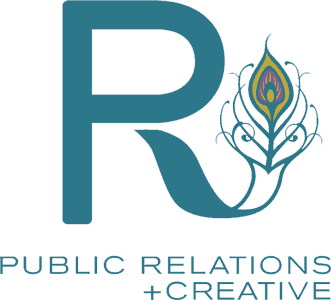Hands down, one of the most integral parts of successful public relations is effective media pitching. The potential value of these types of media relationships is vast. And if done right, proper media coverage can significantly increase your visibility and raise awareness for your brand, product, or cause.
In today’s competitive PR and media landscape, standing out from the crowd is more important than ever. The best way to start making noise? Craft a media strategy that allows you to differentiate yourself from competitors. A carefully crafted narrative can inspire action and engagement from your audience. Media coverage can spark meaningful interactions with your brand, whether by driving website traffic, generating leads, or encouraging social media shares.
People tend to trust information they see in the media more than other sources. Securing coverage in reputable media outlets can enhance brand credibility and build trust among a new customer base. It’s like getting a stamp of approval from a trusted third party. Media coverage also allows you to position yourself or your organization as a thought leader in your industry. You can demonstrate your expertise and influence within your field by offering expert insights or commentary on relevant topics.
When you successfully pitch a story to the media, you’re tapping into their platform and reaching their audience, which can be much larger than your own. The potential for impressions is massive. Effective media pitching requires a targeted approach that ensures your message reaches the right people.
5 Tips for Mastering Media Pitching Etiquette
Here are five tips for mastering media pitching etiquette.
1. Personalize your pitches to each journalist and their beat
Journalists receive countless pitches daily, so standing out is essential. Show that you’ve done your homework and value their expertise of their beat. Tailor your pitch by everything from your tone of voice to how and when you reach out and through what medium. Some of this intel is available online, but some will need to be gleaned through trial and error. Get to know friendly journalists’ communication preferences by scheduling an intro call with them or asking directly. Demonstrating this level of care fosters better relationships with journalists, leading to more organic coverage opportunities in the future.
2. Follow up respectfully
Allowing journalists ample time to review your pitch is crucial for effective media pitching. Patience is key, so plan accordingly and schedule deadlines considering this waiting period. By giving them at least a week to consider your pitch, you demonstrate professionalism and respect for their busy schedules. This approach increases the likelihood of your pitch being noticed and considered and helps build positive relationships with journalists for future opportunities.
3. Don’t be afraid to make a phone call

Don’t underestimate the power of a phone call in media pitching. It allows for direct, personal engagement and can help clarify your pitch or address any concerns in real-time. Plus, it shows initiative and commitment to your story. Don’t overstep boundaries, but don’t be afraid to pick up the phone, especially when first trying to build these contacts and a reputation in the scene!
4. Do some of the legwork
Doing the legwork for journalists is a great way to improve your results. Make it almost impossible for journalists to turn your story away. Offer exclusives, provide all necessary information, grant access to sources, and attach visuals upfront. Anticipate their needs and tailor your pitch to fit their style and audience.
Journalists are always busy and overworked. Make their lives easy — delivering a well-packaged story ready for publication increases the likelihood of coverage and builds trust with journalists. Even if they are looking for something slightly different, there’s a chance they’ll still use your story pitch out of convenience. Remember, the easier you make it for them, the more likely they will say yes!
5. Build professional relationships

Building symbiotic professional relationships is essential in effective media outreach. By fostering mutually beneficial relationships, you become a trusted resource for journalists, making them more receptive to your pitches. Plus, maintaining positive relationships ensures ongoing opportunities for coverage and collaboration. Remember, it’s not just a transaction — it’s about nurturing connections built on trust and respect for long-term success in PR.
Get Started with Media Pitching
Effective media pitching can significantly impact your brand’s reputation, visibility, and bottom line. Craft compelling stories, build relationships with journalists, and target the right media outlets. Maximizing your chances of success is all about mastering the etiquette. For help with your media pitching, contact R Public Relations Firm today.
